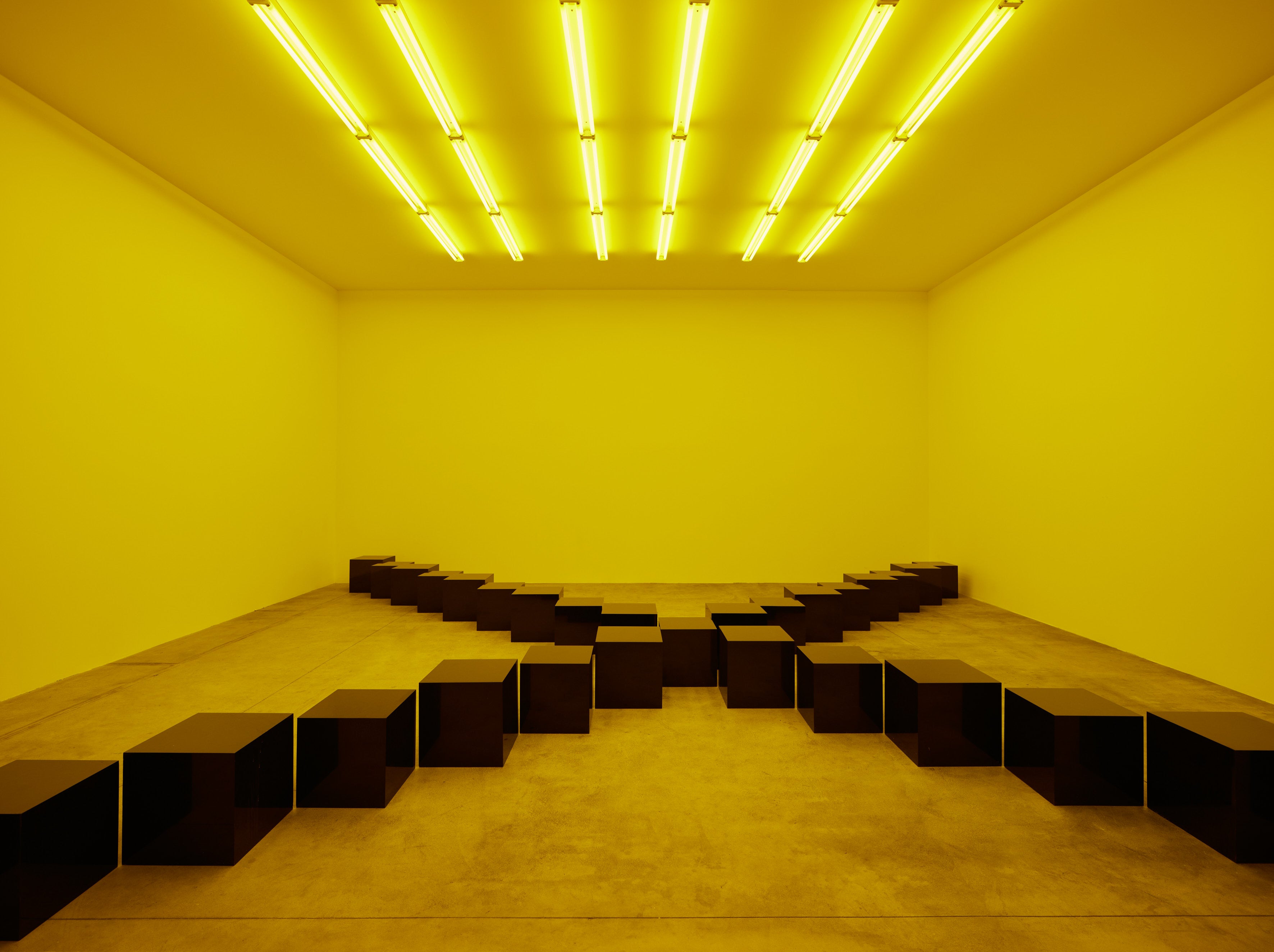Bruce Nauman review: A strangely exhilarating look at a supremely elusive artist
This show at Hangar Bicocca in Milan reveals works in which the gallery-goer becomes the protagonist in subtle visual jokes

Bruce Nauman is the deadpan trickster of conceptual art. The 81-year-old American artist’s status as a name to drop – “one of the world’s most influential artists” is the endless description – has barely slipped over the 50 plus years of his career. Yet signature works such as “Walking in an Exaggerated Manner Around the Perimeter of a Square” (1968), a video of the artist doing precisely that, feel like inscrutable and endlessly extended conceptual-one liners. The fact that the viewer is left wondering if the work involves great philosophical profundities, or if what you see is pretty much what you get, has added, I’ve always felt, to Nauman’s standing. No one wants to be the only person in the room who isn’t in on a great “intellectual” joke.
This major exhibition, now in its third and largest incarnation, after showings at Tate Modern and Amsterdam’s Stedelijk Museum, represents perhaps the ultimate opportunity to get to grips with this supremely elusive artist. Where the earlier manifestations (Tate’s ran for only three weeks due to Covid) included Nauman’s highly influential video works, this version in the truly gigantic Hangar Bicocca, focuses on “architectural” works: corridors and entire rooms. It’s a chance to get physically inside Nauman’s work and find out what, if anything, is at the bottom of it.
The first impression is of a collection of extremely refined walk-in minimal sculptures. The exhibition promises that Nauman’s architecture explores disquieting sensations of confusion and confinement. The first work we see is Dream Passage with Four Corridors (1984), consisting of four neon-lit corridors converging on a central space with a steel table and two steel chairs, and another table and chairs projecting mirror-like from above. It’s undeniably beautiful, but not quite dream-like enough – let alone nightmarish.
Walk Through Contrapposto (1968), in which Nauman walks in blurry video along a narrow corridor, twisting his backside in imitation of the asymmetric postures seen in Renaissance art, feels like the kind of trite in-joke that gives conceptual art a bad name. Yet positioning the narrow structure of Performance Corridor (1969) beside it, so the viewer can – if they wish – re-enact the work themselves, is revealing.
Nauman’s rooms and corridors are not so much architecture as scenery, settings for extremely subtle visual jokes in which the gallery-goer becomes the protagonist – or perhaps that should be fall-guy. Double Wedge Corridor with Mirror (1970), with its two entrances leading to the same mirror, makes a potentially significant idea – that art always takes you back to yourself – feel pretty slight; though it is, like everything here, very elegantly executed. In Corridor Installation (1970), the viewer sees themselves observed on an obsolete early Seventies video monitor (which gives an uncanny feeling of time-travelling), only to turn the corner where they’re watched by another vintage camera, to find themselves mysteriously absent from the room.

Green Light Corridor (1970), a luridly lit and painfully constricting passage along which you squeeze to find the world has turned a brilliant magenta at the other end, apparently caused a sensation on its first British showing at the Hayward Gallery in 1971. If it’s hard to imagine it having that impact now, equally it hasn’t dated. Most of the works here are over half a century old, but the mood is almost eerily timeless. If Nauman’s games with space aren’t as laugh-out-loud, or as unsettling, as you might wish, they never go for the obvious point or gesture. There’s something compellingly hypnotic in the way ideas and structures repeat and mirror themselves, invariably returning the viewer to the same starting point.
The best works involve Nauman’s own voice. Get Out of My Mind, Get Out of This Room (1968), simply a six foot square room with a single lightbulb and the artist’s voice endlessly repeating the work’s title in ever more gravelly tones, gives an idea of what it might be like to be trapped in a box with a fairy tale ogre.But best in show is False Silence (1975). The work is another constricting corridor along which you pass, with the artist’s murmuring voice growing progressively louder, to find yourself at a darkened dead end with Nauman describing a depersonalised state in which someone (the artist, the viewer or both?) is stripped of bodily and emotional responses – “you can’t hurt me, you can’t help me” – to become “an observer, a consumer, a user only.” The effect is at once chillingly funny and impressive. Only a truly courageous artist would force the viewer to stumble up a blank corridor, only to tell them that they’re a meaningless cipher in a work that both lampoons and embodies the dehumanisation of contemporary life.I wouldn’t want to live in Nauman’s world, but I left my brief visit feeling at once numbed and strangely exhilarated.
Until 26 February



Join our commenting forum
Join thought-provoking conversations, follow other Independent readers and see their replies
Comments